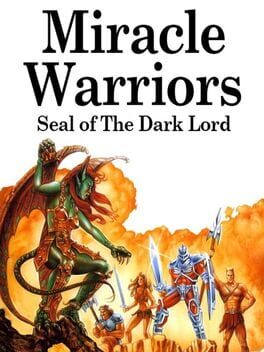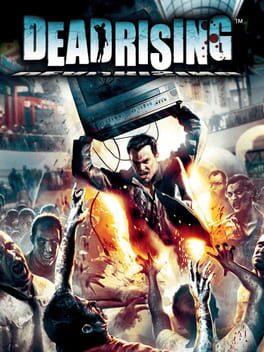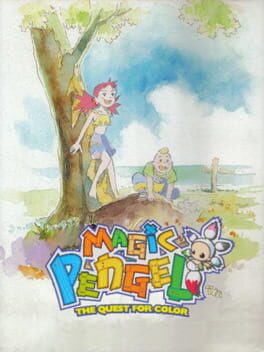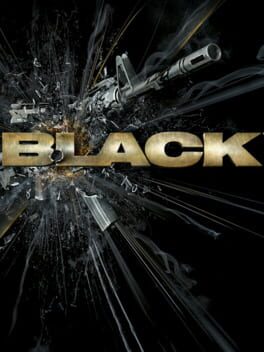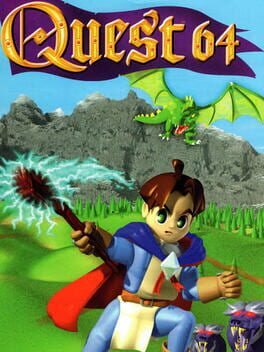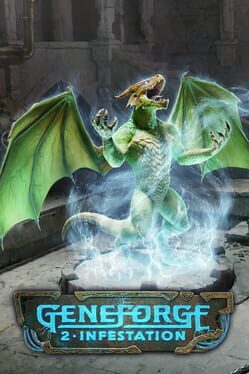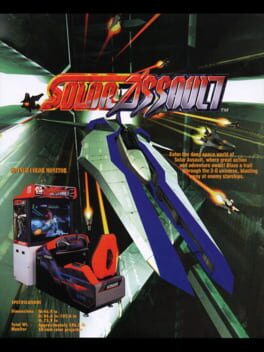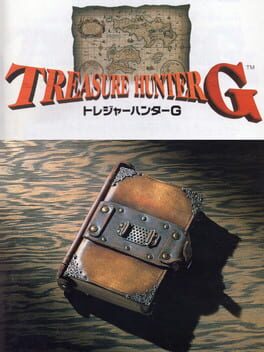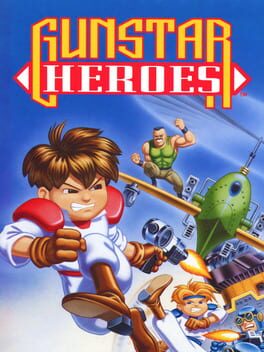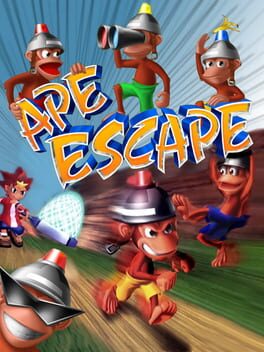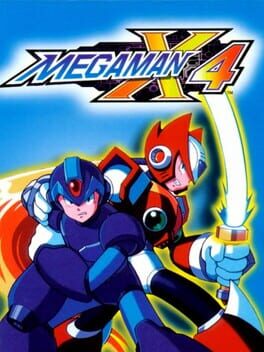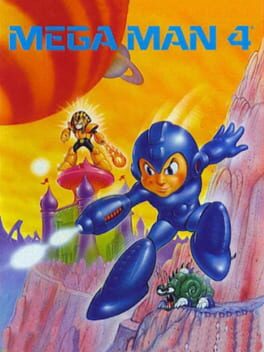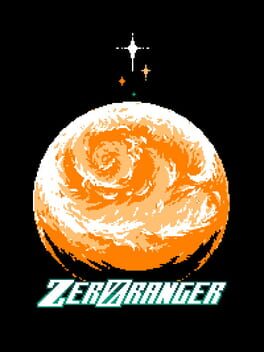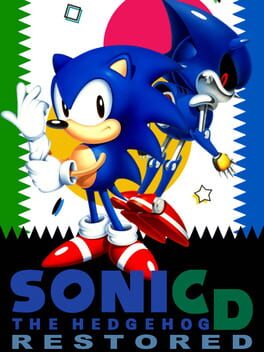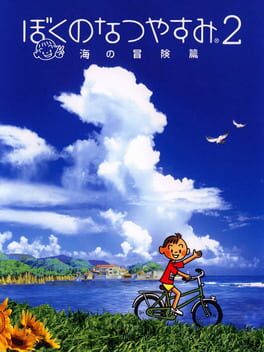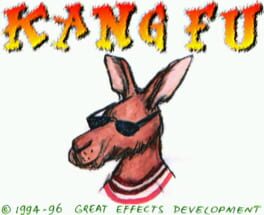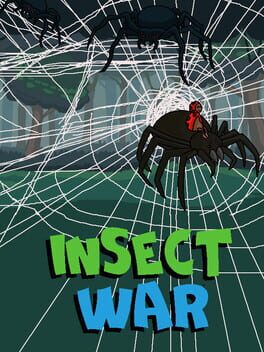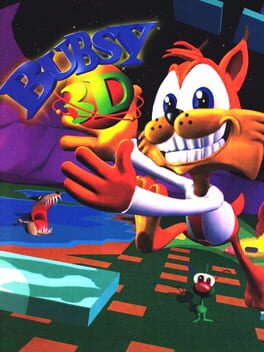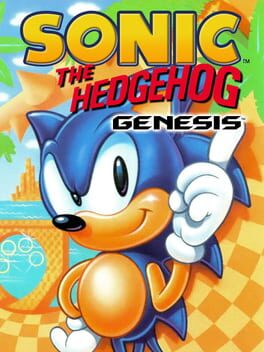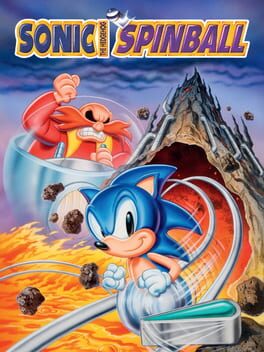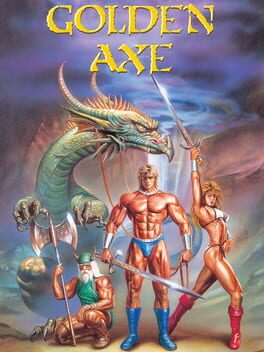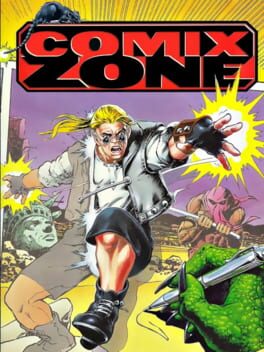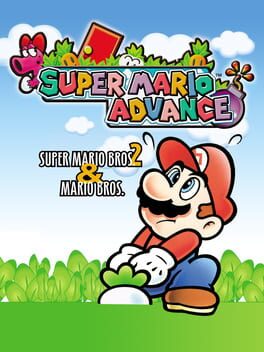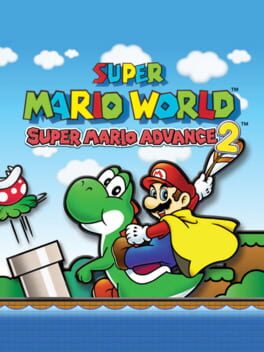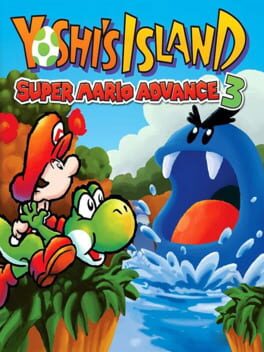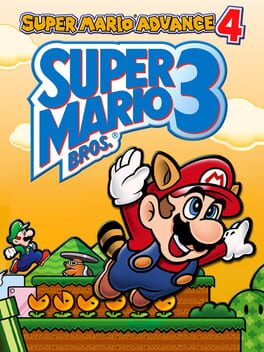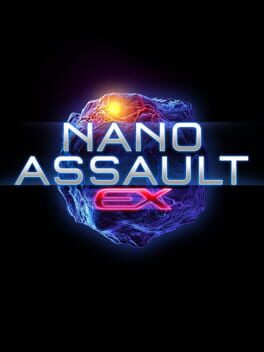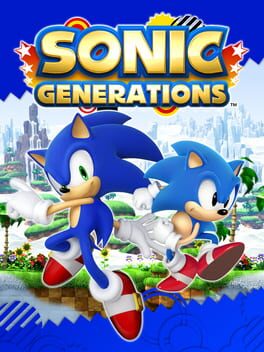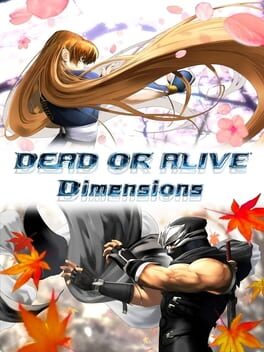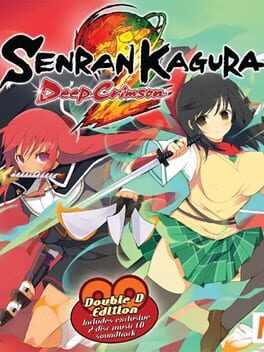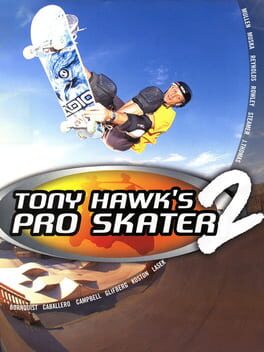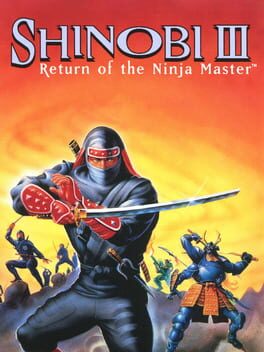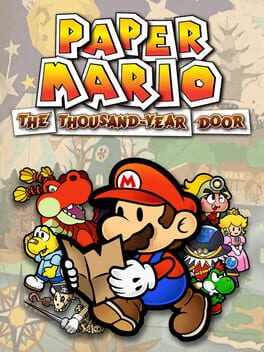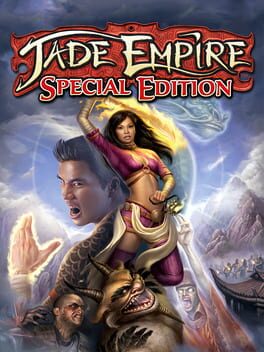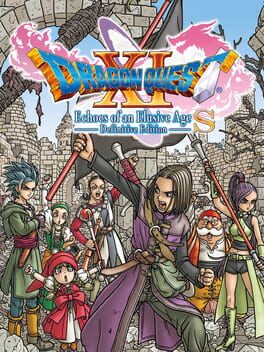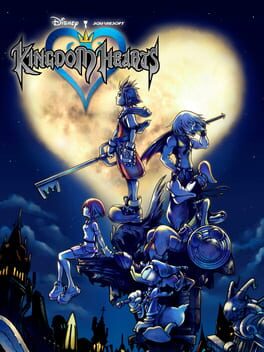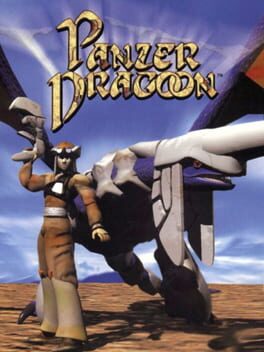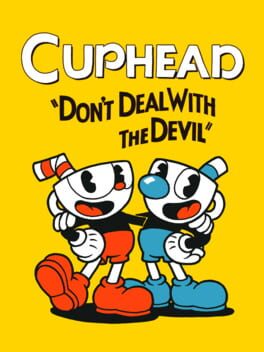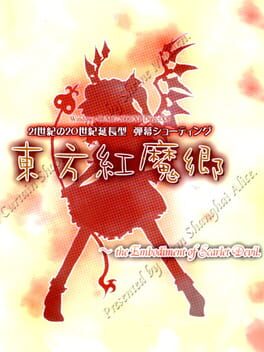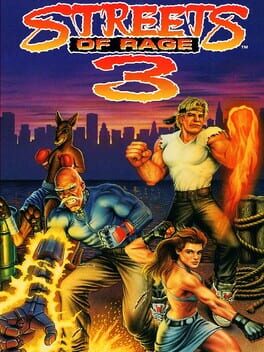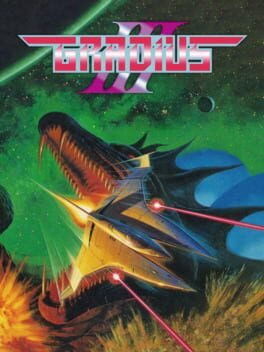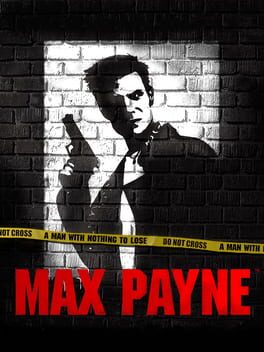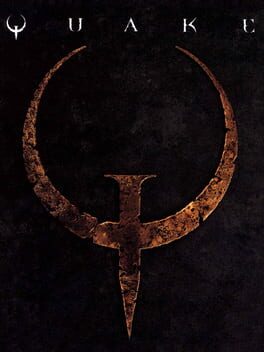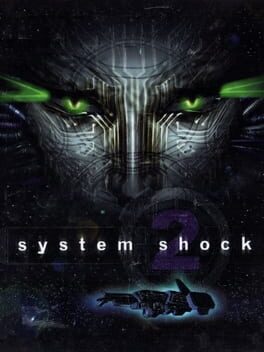Pangburn
4300 reviews liked by Pangburn
Kogado's Miracle Warriors - one of the first JRPGs released in the west, stood apart with their battle quirks (e.g. only one character attacks per turn) and their juxtaposition of third-person & birds-eye viewpoints, with the former view focused on interactions and the latter on navigation. Its main drawbacks are simply the drawbacks of its generation: 3rd-gen combat was almost always slow and monotonous - bestowing challenge mainly through RNG (tough sporadic encounters, misses, escape chance, etc.), and this is no exception. Lofty grind-driven goals (for both equipment & progression) as well as hints, uneven fights and punishing setbacks are also effective time-killers built to mask its limited cart space. There are - however, some creative and perhaps visionary ideas at work. Popularity, a karma point value raised and lowered during battle, is the typical somewhat harsh system (plunging badly after defeating certain troops, and denying access to town services at low levels) that nevertheless feeds into its Talk command, a battle function that awards bonuses (tips, healing) or penalties (stolen gold, missed turns) from human encounters.
Dead Rising
2006
I respect this game first and foremost for not babying you -- it drops you (literally) into zombie shopping mall hell and says, "figure it out." All of the mechanics I uncovered in the hours I played were quite cool -- holding books to increase stats; levelling up with survivor rescues and photography; unlockable special moves; the way game-time is woven into progression; etc... And the actual meat of the gameplay -- the dispatching of countless undead through comically varied means, including lawnmowers and umbrellas and mannequins and whatever else you can find -- is awesome. You can tell it's fine-tuned to feel exceptionally hefty. Every swing of a baseball bat, or pole, or dismembered hand feels consequential and releases sweet, sweet brain chemicals.
Where the game falters is fairly obvious. The "boss battles" (for example, the second encounter with Carlito) are embarrasments of design. Much of the world traversal feels too slow for a game that relies so heavily on it. Many of the coolest weapons are made far too difficult to uncover in the early game -- a needless roping off of fun. Finally, as many, many others have mentioned, the entire thing is a rickety tower of escort missions with the stupidest AI imaginable.
But, you know, at the end of the day I think there's still plenty of fun to be had here. There's a ton of genuinely great ideas to mull over, there's that miniature-open-world gamefeel that I personally love, and then of course there's Frank West -- a surprisingly delightful protagonist.
Recommended in spite of its flaws.
Where the game falters is fairly obvious. The "boss battles" (for example, the second encounter with Carlito) are embarrasments of design. Much of the world traversal feels too slow for a game that relies so heavily on it. Many of the coolest weapons are made far too difficult to uncover in the early game -- a needless roping off of fun. Finally, as many, many others have mentioned, the entire thing is a rickety tower of escort missions with the stupidest AI imaginable.
But, you know, at the end of the day I think there's still plenty of fun to be had here. There's a ton of genuinely great ideas to mull over, there's that miniature-open-world gamefeel that I personally love, and then of course there's Frank West -- a surprisingly delightful protagonist.
Recommended in spite of its flaws.
It's impressive how much the team got right on their first attempt, but there are still a few minor quirks and annoyances that make me prefer Aria to it. Mostly small things like how a lot of the platforms in the inverted castle are placed in such a way that they're barely out of reach of your double jump so you need to use the mist or bat forms to get past them, how the wolf form is kind of useless outside of running through the game's handful of straight enemy filled hallways faster, or how most of the bosses are complete pushovers when compared even to some of the tankier normal enemies. And even they were stupidly easy once I found out about the moon rod's special ability. I know that fully exploring the game didn't help this, but even then I only finished with a completion percentage of 192.6%, so there were probably a few things I missed.
Although Rondo and Symphony are both fantastic games, this is such a barebones collection that I feel like I need to dock some points from it. It's basically a title screen menu that drops you into an emulated version of the Dracula X Chronicles unlockable versions of the two games. The other two Castlevania collections are much better overall packages than this is, but it's still an easily accessible way to play these games for someone like me who's too braindead/stubborn to just emulate.
I will be upfront here and admit that my initial impression of Magic Pengel was underwhelming. The first couple of hours felt extremely plodding, thanks to the opening glut of story cutscenes with awkward voice acting, the lack of part variety to attach to your Doodles (your drawable monsters for battle), and the initial grind for more colors necessary to both draw and further develop your Doodles. This initial grind can be a nightmare because a lot of the fightable villagers will easily outclass you in terms of sheer stats and stall you out by using Charge every other turn to heal off more damage than you can inflict, so you’ll end up wasting your arena time if you happen to challenge a super tough villager since there’s also no way to forfeit a match. It also doesn’t help that there’s a half minute loading screen every time you need to move to a new area in the overworld, so you’ll end up sitting through over a minute of loading screens moving between the two main arenas alone since there’s no fast travel and you’ll have to pass through the market every time. Not a great start for a seemingly great premise!
Get past this initial roadblock by winning a few arena matches and gaining enough resources to thoroughly flesh out your Doodles with better stats, however, and the game starts to find its footing. Combat is almost entirely turn-based rock-paper-scissors (magic trumps attack, attack trumps block, block trumps magic) with some degree of mind games. This fortunately does get a bit more complex later on; landing magic spells can inflict status effects such as paralysis and sleep upon foes, as well as temporarily lock or punish types of attacks depending on the spell used. This essentially adds another layer to the mind games, aside from the aforementioned Charge for healing/powering-up the next attack/resetting neutral; thus, combat isn't just mindlessly following the advantage triangle specified above. In addition, the colors and parts used (i.e. adding limbs, wings, a held weapon, etc) drastically change both your stat and skill distribution (explained in more detail here and here ), and since your drawing capabilities and max capacity are increased with each arena win, you’ll likely be redrawing your Doodles all the time anyways to keep up with the tougher fights while tinkering with new and expanded loadouts. Simultaneously, it becomes a lot easier to farm resources since your Doodles will finally have enough attack power to deal more damage than opponents can heal off with Charge, and you’ll earn significantly more of each color (a few thousand as opposed to a few hundred in the early game) upon victories. While Magic Pengel’s combat never reaches the depth of similar monster battling systems such as Pokemon, I nevertheless found it easy enough to get into the rhythm of the progression loop once I got past the opening grind, and it served as a solid podcast game that vaguely reminded me of my days laddering on Pokemon Showdown.
A word of warning though: as much fun as it is sketching crude creatures with your Pengel and watching your crayon abominations destroy developer-drawn Doodles with much more effort put into sketching, that is unfortunately just about all that this game has to offer. Magic Pengel’s narrative touches upon some interesting lore and story beats concerning both the world of color and the supporting cast (such as your friend Zoe’s connection with her missing foster father, a renowned Doodler that once worked for the king), but the game never goes into too much detail with its sparse storytelling, and it ends on a bit of a cliffhanger as your friends decide to set off on another adventure. While you can sell spare colors for gold gems, there’s not much to purchase from shopkeepers; you can buy a few brushes to further adjust your line thickness, but the only other items on offer are Doodles, and there’s no point in buying those when you’ll get far more utility out of drawing your own (especially because you can’t delete any part of a Doodle drawn by an NPC). Finally, the game is a bit lacking in post-game content. The only unlocked features are a new arena where you can engage in 1 v 3 or 2 v 3 fights for higher rewards, as well as a hidden boss that can be fought if you somehow grind one million gold gems. As such, I have to concede that a lot of the Magic Pengel’s surrounding elements could have used some more time in the oven.
Ultimately, I prefer the game’s spiritual successor Graffiti Kingdom for its more succinct runtime and expanded drawing utensils. Even so, I mostly enjoyed my time with Magic Pengel (the quaint charm and artstyle admittingly a big reason why), and I’d say it’s worth checking out if you want a taste of one of more creative monster collecting/creating games out there. I think Taito had something really special on their hands with this formula, and it’s a shame we’ll never see a game in this vein from them again.
Get past this initial roadblock by winning a few arena matches and gaining enough resources to thoroughly flesh out your Doodles with better stats, however, and the game starts to find its footing. Combat is almost entirely turn-based rock-paper-scissors (magic trumps attack, attack trumps block, block trumps magic) with some degree of mind games. This fortunately does get a bit more complex later on; landing magic spells can inflict status effects such as paralysis and sleep upon foes, as well as temporarily lock or punish types of attacks depending on the spell used. This essentially adds another layer to the mind games, aside from the aforementioned Charge for healing/powering-up the next attack/resetting neutral; thus, combat isn't just mindlessly following the advantage triangle specified above. In addition, the colors and parts used (i.e. adding limbs, wings, a held weapon, etc) drastically change both your stat and skill distribution (explained in more detail here and here ), and since your drawing capabilities and max capacity are increased with each arena win, you’ll likely be redrawing your Doodles all the time anyways to keep up with the tougher fights while tinkering with new and expanded loadouts. Simultaneously, it becomes a lot easier to farm resources since your Doodles will finally have enough attack power to deal more damage than opponents can heal off with Charge, and you’ll earn significantly more of each color (a few thousand as opposed to a few hundred in the early game) upon victories. While Magic Pengel’s combat never reaches the depth of similar monster battling systems such as Pokemon, I nevertheless found it easy enough to get into the rhythm of the progression loop once I got past the opening grind, and it served as a solid podcast game that vaguely reminded me of my days laddering on Pokemon Showdown.
A word of warning though: as much fun as it is sketching crude creatures with your Pengel and watching your crayon abominations destroy developer-drawn Doodles with much more effort put into sketching, that is unfortunately just about all that this game has to offer. Magic Pengel’s narrative touches upon some interesting lore and story beats concerning both the world of color and the supporting cast (such as your friend Zoe’s connection with her missing foster father, a renowned Doodler that once worked for the king), but the game never goes into too much detail with its sparse storytelling, and it ends on a bit of a cliffhanger as your friends decide to set off on another adventure. While you can sell spare colors for gold gems, there’s not much to purchase from shopkeepers; you can buy a few brushes to further adjust your line thickness, but the only other items on offer are Doodles, and there’s no point in buying those when you’ll get far more utility out of drawing your own (especially because you can’t delete any part of a Doodle drawn by an NPC). Finally, the game is a bit lacking in post-game content. The only unlocked features are a new arena where you can engage in 1 v 3 or 2 v 3 fights for higher rewards, as well as a hidden boss that can be fought if you somehow grind one million gold gems. As such, I have to concede that a lot of the Magic Pengel’s surrounding elements could have used some more time in the oven.
Ultimately, I prefer the game’s spiritual successor Graffiti Kingdom for its more succinct runtime and expanded drawing utensils. Even so, I mostly enjoyed my time with Magic Pengel (the quaint charm and artstyle admittingly a big reason why), and I’d say it’s worth checking out if you want a taste of one of more creative monster collecting/creating games out there. I think Taito had something really special on their hands with this formula, and it’s a shame we’ll never see a game in this vein from them again.
Black
2006
nice shotgun(s)!
played on ps2
played on ps2
Quest 64
1998
Imagineer coined a uniquely minimal (level-less, item-limited, currency-less and party-less) form of JRPG with Quest 64, whose light storytelling, vast 3D areas and day/night cycles brought them closer to computer-RPGs than to its console-born siblings. What is undoubtedly CRPG-like - however, is their flexible upgrade system. Stat-leveling in the vein of FFII (i.e. earned from various parts of combat) is joined by collectible skill points distributed between 4 elements (which unlock new spells of that type and increase their power). Their combinations - from balanced spreads to a dual-type hyperfocus, governs the player's build with their own merits and limits. That sense of freedom well-complements their turn-based battles; seamless, responsive on-map gameplay with confined movement/dodging that's heavy on the spellcasting, reined in a little by elemental weaknesses and resistance. These two features rescue a work that otherwise would be dull and clumsy, as its lengthy overworld & dungeons plus a general dearth of content (other than a handful of pickups) make for some patience-testing trips. As a result, gameplay oscillates between moments of snappy, entertaining semi-action and sheer torture.
This brief project is many things at once, and - depending on taste, some conclusions are more prominent than others: A few great ideas placed on weak foundations. A half-baked mess. An interesting compromise between action & tactical gameplay. A novel fusion of Western/J-RPG languages, or even a grim omen of their genre's future; of the overscaled, empty worlds that progressively defined the next generation onwards. At the very least - though, a fascinating artifact of its era.
This brief project is many things at once, and - depending on taste, some conclusions are more prominent than others: A few great ideas placed on weak foundations. A half-baked mess. An interesting compromise between action & tactical gameplay. A novel fusion of Western/J-RPG languages, or even a grim omen of their genre's future; of the overscaled, empty worlds that progressively defined the next generation onwards. At the very least - though, a fascinating artifact of its era.
This review contains spoilers
mannnnnnnnnnnnnn idkkkkkkkk rlly......if my nigga jeff couldn't save the whole "faction war" genre of CRPGs the whole sub genre might be done & dusted 4 me. made me appreciate how geneforge 1 is rlly tightly woven around the very --idea-- of the geneforge and the resulting question of control/power. (not just control over others but also control over self & environment e.g. "the geneforge will let me write my own destiny!", which makes for the ultimate irony that gene rewriting turns you into 2010s Orlando Bloom instead of God). even though there's various factions and unofficial subfactions in GF1, it never loses sight of its main appeal of being a quasi-sci-fi in concerns & motifs with a flair for some usual fantasy dramatics of faction politicking and will they/won't they betrayals. it's not pen to pad great writing or some life-changing shit but as an unassuming piece of genre fiction its really captivating.
GF2 just feels way sloppier. there's a rough beginning stretch until you meet the barzites where the narrative feels extremely repetitious coming off the prequel--forgivable in the original release considering GF2 was released as an unplanned sequel, less so in the context of a remake. meeting the barzites & the takers things pick up, using some of the minor floating concepts from Sucia Island (drayks as forbidden creations, shapers on the island before/during/after the protag's visit, etc.) and building compelling factions out of them--had a big pointing out at the screen "AT-ST!!!!" moment when Syros from the last game shows up as the de-jure Taker leader. the servile mindbreak & subsequent warcrimes the takers inspired in GF1 also balloons out into this drama of --everybody-- breaking Shaper law, & jeff is smart enough to upend the pro-freedom view players likely developed last game. one nigga you meet early on is like "hmm yea i started hearing voices in my head like randy orton after using the canisters and idk what to do about it" & you ask him "hey man u alright? are there certain things that help the voices go away?" thinking its a sidequest opportunity but then he's like "no you don't understand. the voices literally never stop" & then he just walks away. that's the whole NPC interaction. then like not even an hour earlier you see a created beholder go rogue & wipe out a whole outpost by mental projecting a 24 hour j. cole mix & its like.....maybe the wizard fascists were kinda cooking dawg idk. shits so unserious out here. its genuinely really smart stuff that after the trial by fire players go through in GF1 the sequel baits & festers a reactionary mindset towards shaper laws being relaxed. hard not to just hit the meanest unc headshake of all time when you see a local farmhand accidentally summon a creation that literally feasts on niggas' souls & promptly lose control of it. & then the farmhand will have the damn nerve to ask you clean up their mess. SMH nephew......
BUT it all comes crashing down hard when you get to the main quests endgame. the most succinct way i can explain it is that the stretch of midgame to credits in GF1 is about either going into business for yourself, striking a deal with the opps, or just blowing the whole island up and leaving the shitshow entirely. the stretch of midgame to ending in GF2 is you spinning the block on the other factions until you find out that there's a trio of drakkons (the thing on the cover) running the whole island and you need to kill them/make them gods almost immediately. & its like, ok??? the decision to kingmake or not feels distinctly impersonal to the roleplaying that happens in the majority of the game, & not in a 'subversive' way either. like there's just no build. hour 20 you ask me what an 'Eass' is and I woulda guessed an eastern european slur, hour 21 Eass is actually behind the Takers & p.s. he has an almost completed geneforge & p.s. he has the gloves always on him so he can't be tricked & p.s. he's creating another drakkon that's even better than him & p.s. when it slipped out she put back in & p.s. he tapped it on her tongue. like dawg nobody knew who this nigga is why does he have this much motion. i wish i can say more but i cant really state how abrupt shit is, even when allying with Eass's faction in the Takers, you don't know of his existence till maybe 90 minutes before credits in a 25 hour experience. & let me clear this isn't really treated as a shock twist either or an ozymandias situation jeff writes in Eass and his goof troop with a straight pen. just feels like an elementary & dare i say 'omg rushed 🤓' design flaw from a guy who goes beyond that usually.
just wished it was more man. i will say this game did two things i've never seen before in a CRPG. the first is that you can end the game 10 minutes into it by simply walking out of the whole mountain. GF1 also let you dip out the game early, but not like immediately after the tutorial cause like who tf does that LMAO. i hope he keeps including early exits their mere existence adds a lot of funny 'nah fuck this' moments of roleplay even if they all result in the same bad ending.
the second is that i have never seen a game setup a 1v3 final boss only it to turn into a 1v1 because two members of the trio just run out the boss room. and show back up after the fight is over like nothing happened. this is not a glitch. will leave as an exercise to the reader to investigate further on that one but man. some people will really just slime out you for no reason at all.
GF2 just feels way sloppier. there's a rough beginning stretch until you meet the barzites where the narrative feels extremely repetitious coming off the prequel--forgivable in the original release considering GF2 was released as an unplanned sequel, less so in the context of a remake. meeting the barzites & the takers things pick up, using some of the minor floating concepts from Sucia Island (drayks as forbidden creations, shapers on the island before/during/after the protag's visit, etc.) and building compelling factions out of them--had a big pointing out at the screen "AT-ST!!!!" moment when Syros from the last game shows up as the de-jure Taker leader. the servile mindbreak & subsequent warcrimes the takers inspired in GF1 also balloons out into this drama of --everybody-- breaking Shaper law, & jeff is smart enough to upend the pro-freedom view players likely developed last game. one nigga you meet early on is like "hmm yea i started hearing voices in my head like randy orton after using the canisters and idk what to do about it" & you ask him "hey man u alright? are there certain things that help the voices go away?" thinking its a sidequest opportunity but then he's like "no you don't understand. the voices literally never stop" & then he just walks away. that's the whole NPC interaction. then like not even an hour earlier you see a created beholder go rogue & wipe out a whole outpost by mental projecting a 24 hour j. cole mix & its like.....maybe the wizard fascists were kinda cooking dawg idk. shits so unserious out here. its genuinely really smart stuff that after the trial by fire players go through in GF1 the sequel baits & festers a reactionary mindset towards shaper laws being relaxed. hard not to just hit the meanest unc headshake of all time when you see a local farmhand accidentally summon a creation that literally feasts on niggas' souls & promptly lose control of it. & then the farmhand will have the damn nerve to ask you clean up their mess. SMH nephew......
BUT it all comes crashing down hard when you get to the main quests endgame. the most succinct way i can explain it is that the stretch of midgame to credits in GF1 is about either going into business for yourself, striking a deal with the opps, or just blowing the whole island up and leaving the shitshow entirely. the stretch of midgame to ending in GF2 is you spinning the block on the other factions until you find out that there's a trio of drakkons (the thing on the cover) running the whole island and you need to kill them/make them gods almost immediately. & its like, ok??? the decision to kingmake or not feels distinctly impersonal to the roleplaying that happens in the majority of the game, & not in a 'subversive' way either. like there's just no build. hour 20 you ask me what an 'Eass' is and I woulda guessed an eastern european slur, hour 21 Eass is actually behind the Takers & p.s. he has an almost completed geneforge & p.s. he has the gloves always on him so he can't be tricked & p.s. he's creating another drakkon that's even better than him & p.s. when it slipped out she put back in & p.s. he tapped it on her tongue. like dawg nobody knew who this nigga is why does he have this much motion. i wish i can say more but i cant really state how abrupt shit is, even when allying with Eass's faction in the Takers, you don't know of his existence till maybe 90 minutes before credits in a 25 hour experience. & let me clear this isn't really treated as a shock twist either or an ozymandias situation jeff writes in Eass and his goof troop with a straight pen. just feels like an elementary & dare i say 'omg rushed 🤓' design flaw from a guy who goes beyond that usually.
just wished it was more man. i will say this game did two things i've never seen before in a CRPG. the first is that you can end the game 10 minutes into it by simply walking out of the whole mountain. GF1 also let you dip out the game early, but not like immediately after the tutorial cause like who tf does that LMAO. i hope he keeps including early exits their mere existence adds a lot of funny 'nah fuck this' moments of roleplay even if they all result in the same bad ending.
the second is that i have never seen a game setup a 1v3 final boss only it to turn into a 1v1 because two members of the trio just run out the boss room. and show back up after the fight is over like nothing happened. this is not a glitch. will leave as an exercise to the reader to investigate further on that one but man. some people will really just slime out you for no reason at all.
Solar Assault
1997
A Konami rail shooter that's essentially 3D Gradius, which is maybe a little bit cool.
I don't like playing these kinds of games at home (using digital control when emulating makes for deeply imprecise movement), but can acknowledge that they were probably pretty dope full-cabinet experiences back in the day.
Maybe an analog flight stick changes everything. I'll never know.
I don't like playing these kinds of games at home (using digital control when emulating makes for deeply imprecise movement), but can acknowledge that they were probably pretty dope full-cabinet experiences back in the day.
Maybe an analog flight stick changes everything. I'll never know.
Treasure Hunter G
1996
Treasure Hunter G marked Sting Entertainment's initial venture into RPGs - pivoting around segmented, AP-driven tactics with the option to move/attack diagonally. Other components, both in-battle and out, further prove that this is far from the usual SRPG. Its creative weapon functions (e.g. spear attacks that also hit those directly behind the user) are backed by concepts not normally found in the genre, including DnD-esque item throws, tile-trapping, variable AP consumption (influenced by enemy proximity), random teleports and knockbacks. No less distinctive is their economy. Money is earned not via battles but by collecting/selling loot salvaged from environmental objects; interesting (and thematically sound) if not particularly exciting, a quality that also applies to its shops (purchasing items on display rather than from a menu) and puzzles (centered on riddles). They also craft detailed towns and interiors much like their publisher - but in general, combat is the prevailing feature here. With the help of preset fights a la Chrono Trigger (i.e. mob-activated & fixed ambushes taking place on the current map), these battles fuse the concise nature of encounter-based strategy with the design variety of their mission-based brethren, somewhere between Arc the Lad and Tactics Ogre.
On the other hand, its story and characters are hardly memorable, despite the amount of cutscenes and despite some truly strange moments - and, given their myriad variations in layouts, encounters are potentially hit or miss (with boss fights leaning towards the latter end).
On the other hand, its story and characters are hardly memorable, despite the amount of cutscenes and despite some truly strange moments - and, given their myriad variations in layouts, encounters are potentially hit or miss (with boss fights leaning towards the latter end).
647 lists liked by Pangburn
by Retro |
53 Games
by JordanResin |
35 Games
by JetWolfEX |
27 Games
by MagneticBurn |
10 Games
by MagneticBurn |
49 Games
by Hooblashooga |
19 Games
by Silverhand |
22 Games
by Nerdietalk |
69 Games
by Retro |
33 Games
by stealthrush |
100 Games
